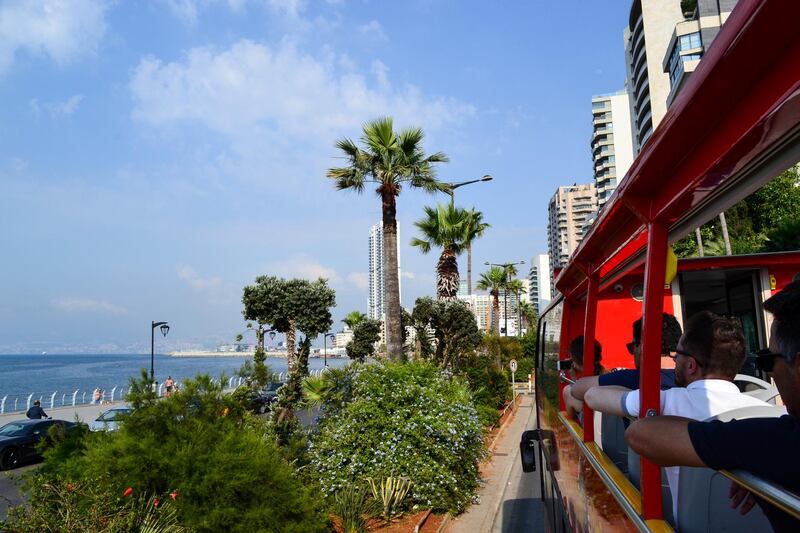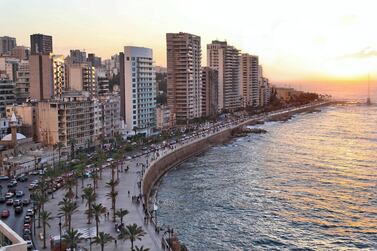The protesters begin to sit down in the middle of the road, chanting, indifferent to the bright-red double-decker bus that idles a few feet away, trapped between the sit-in and a tank that has been rolling along behind the demonstration. As the driver speaks to a policeman, trying to negotiate a way to turn around and continue his tour of Lebanon's capital, a Portuguese tourist on the open-top upper deck stands up on his seat, holding his phone aloft to snap a photo of the protesters. This is City Sightseeing, the Beirut way.
Two hours earlier, on a humid Wednesday afternoon in June, I, along with a handful of tourists, boarded one of Lebanon's three double-decker buses. The new City Sightseeing carriers – familiar from the streets of London, Paris, Barcelona and 100 other cities – are still turning heads on the streets of Beirut a month after launching.
They queue in heavy Achrafieh traffic, bowl along the Corniche and circumnavigate Beirut Central District’s tortuous one-way system. In a city with famously chaotic roads and gridlocked traffic, the buses are managing to provide semi-regular tours – albeit with a typical Lebanese flexibility towards timetables and routes.
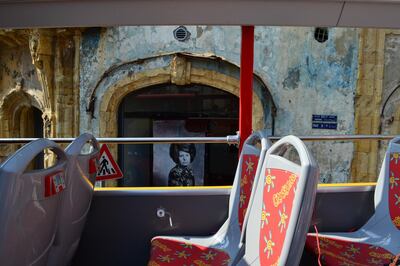
The bus has 15 designated stops that include five museums, three monuments, a cathedral, a Roman garden and Pigeon Rocks – the natural stone arches in the sea that are the city's only natural tourist attraction. These cultural and historic sites are punctuated with some commercial "highlights", including three shopping malls and the luxury seaside development, Zaitunay Bay. Passengers can listen to an audio guide that features nuggets of the city's history and advertisements in cheerful Arabic, French, English, Chinese or Spanish. These are interspersed with snatches of music that often fade away between stops, leaving us to listen to the growl of the bus's engine and the furious beeping of car horns.
Written by the history department of Saint Joseph University, the audio guide delves into the events that shaped the city, from World War One and the Armenian Genocide, to the Lebanese Civil War and the assassination of Bachir Gemayel (a former Christian militia leader and Lebanese president killed in 1982) and Rafiq Hariri (a former Sunni prime minister – and father of the incumbent, Saad Hariri – killed in 2005). Even after living in Beirut for eight years, I learn a thing or two as we wind our way through the city.
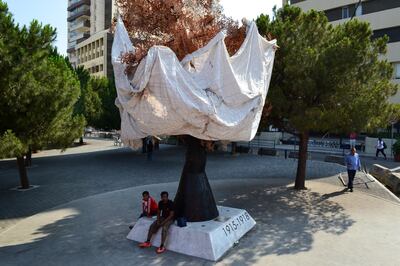
At ABC Achrafieh, the first shopping mall, three Portuguese men get on. They’ve just arrived in Beirut and Francisco Coelho explains that the bus tour is their first activity, a way to help situate themselves in the city and learn a bit about its history. They plan to ride the entire loop before taking the bus again the following day to hop off at their preferred sites. “We have great hope that this could be a magical city to recommend to friends,” he says.
Viviane Nasr, the chief executive of the Beirut franchise of City Sightseeing, has long been a fan of the hop-on/hop-off service, which was founded in Spain in 1999. She spent 18 months working to bring it to Beirut, crafting the route and importing three buses from China. She is undaunted by the city's notorious traffic.
"In all cities in the world you have this kind of traffic at certain times – in New York, in Paris, in Dubai. When there is traffic you're stuck and that's it," she says. "The challenge was the infrastructure. We don't have drop zones. We are creating them. We are cutting trees because these are the first double-deckers in Beirut, and sometimes we had electric cables we had to cut and remove."
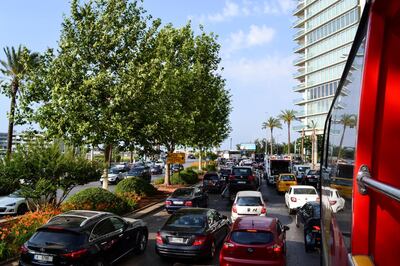
The unpredictability of road works in Beirut is a handicap as well, diverting our journey away from the planned route through the trendy neighbourhood of Gemmayzeh to see the picturesque Saint Nicolas Stairs.
Nasr is still working on creating bus stops – and ensuring that people don't park in them, which is a recurrent problem since the service began. The tour is currently attracting an average of 50 to 75 people a day, she says, but she hopes to increase this figure to 100. It is doable, as Lebanon has experienced a steady growth in tourism over the past two years, registering almost two million visitors in 2018, the majority coming from Europe.
Is it worth it? Well, the first half of the tour is packed with stops and information, but after we pass the National Museum, the route's midpoint, the audio guide falls silent and time begins to drag. It's a relief to see the sea glittering in the distance as we approach Ramlet Al Baida, the last public beach in Beirut.
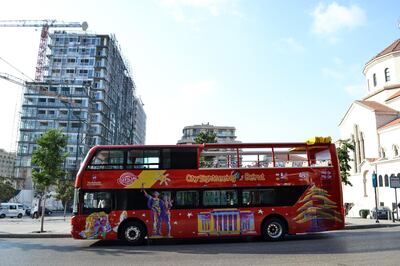
Unfortunately, we’re on the far side of the road from the sea. When we stop beside Pigeon Rocks, we can only see the twin tops of the stone formations poking above the cliff side. Nevertheless, the height of the bus affords good views over the stream of oncoming traffic to the wide seaside promenade and the sea beyond. Even caught in the beginnings of rush-hour traffic, creeping along in a fog of exhaust fumes, it’s a pleasure to watch the afternoon crowds out for a seaside stroll and the fishermen patiently monitoring their rods as we drive along, level with the tops of the palm trees.
By the time we reach Ain Al Mreisseh, 90 minutes have gone by – the estimated time for the whole loop – and traffic is gridlocked. We inch along the highway, surrounded by commuters trying to leave the city, before we turn off towards downtown, where the last three stops are. Just past the Beirut Souks, in the home stretch, we hear a cacophony of shouting and chanting.
We round the corner to find students from the Lebanese University who are protesting about funding cuts, and have taken their speakers and placards on to the streets. Riot police walk alongside them.
Trapped behind the protesters, we idle on the one-way road, unable to go forward or back. The Portuguese tourists are fascinated. Judging by their response, this unscheduled stop might be the most interesting one on the entire route.
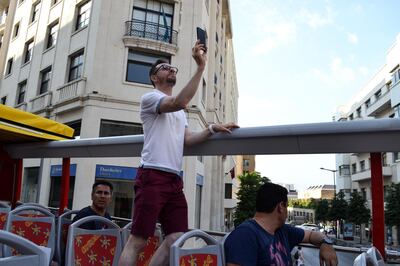
After 10 minutes, the police open a side road to allow the bus to turn around, and we head back the way we came, into a solid stream of traffic. So much traffic, in fact, that a lady in a cheerful City Sightseeing cravat boards the bus to announce that we won’t be returning to Martyrs’ Square, the tour’s scheduled final stop.
Instead, we are dropped at the Cathedral of St. Elias and St. Gregory the Illuminator, the second stop on the route. Two-and-a-half hours have passed since we set off. The Portuguese tourists mill around for a few minutes, confused, before the lady points them in the direction of Martyrs' Square, a five-minute walk away. An introduction to the city's history and geography has been complemented by an introduction to the Lebanese habit of adapting the rules on the go. Welcome to Beirut.
